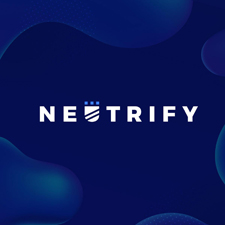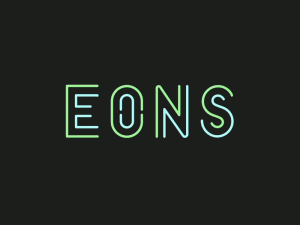□An NFT can vanish without the immediate continuity of required ongoing technical maintenance, web site hosting including long term domain registration and validity.
In the current NFT marketplaces, an NFT, regardless of any documented authentication and validated ownership, could be deleted, transferred or disappear. Authentication of token ownership, irrespective of all metadata provided, does not guarantee an MFT buyer’s ongoing access to view or transfer ownership.
□Reliance on 3rd party technical resources for maintenance of domain registrations and continuity of hosting services of web sites presents risk of loss and ability to seek recovery of the purchased NFT, further incurring costs and uncertain timeframes in the pursuit of resolution.
-
- □Ultimately, buying an NFT is a collection of metadata defining what is owned.And as is known globally, web site links can and often disappear without any trace and without recourse to recapture the lost link and underlying access to the actual NFT asset purchased. What occurs should this happen–an NFT breaks down and points to nothing.
-
- At present in the very early iterations of NFTs the focus has been digital art, and sport card collections. As the NFT sector develops a much broader asset spectrum will emerge which will extend to include more complex intellectual property.
-
What’s an NFT?
NFTs allow you to buy and sell ownership of unique digital items and keep track of who owns them using the blockchain. NFT stands for “non-fungible token,” and it can technically contain anything digital, including drawings, animated GIFs, songs, or items in video games or even actual physical assets.
An NFT can either be one-of-a-kind, like a real-life painting, or one copy of many, like trading cards, but the blockchain keeps track of who has ownership of the file.
The system usually relies on the Ethereum blockchain, ensuring an immutable unalterable record of everyone who has owned the NFT, and prevents alteration of the NFT.
This provides identity and historical transaction integrity to the owned NFT preventing fraudulent resales with misrepresentation of ownership.
Full history is contained in the metadata of the NFT from inception of purchase. Analogous to documentation of ownership of an asset with papers that authenticate the asset transfer– yet with an NFT it is not the actual asset but a certification of provenance and history of the underlying asset.
Very little data is stored directly inside an NFT. The NFT includes information on where you can find a description of the artist’s name and the title of the work, but that information is not typically on the blockchain itself.
NFTs include information on where you can find the asset- defining the artwork, trading card they represent, but the actual artwork is still a link away.
Traditional URLs–web sites and third party web hosting companies -pose verifiable risks to NFTs as noted:
■The owner of the domain name could redirect the URL –the pathway to the web site – to point to something else -another site or geographic destination (leaving the NFT buyer legally unable to pursue retention of their NFT purchased asset.
Within traditional web site structure URLs could break down if either of the two different companies -the marketplace web site/auction site owner and the web hosting company as Internet service provider ceased to exist.
At no time does the NFT Buyer have any form of control over any third parties absent the financial resources to buy out the entire domain and pay to keep the NFT associated web site online.
At present, to currently solve that problem, many NFTs turn to a system called IPFS, or InterPlanetary File System. Rather than identifying and matching a specific file to a specific domain, IPFS addresses enable locating a piece of content as long as someone somewhere on the IPFS network is traceable as hosting it. That compels a multitude of hosts, rather than a single domain owner, ensuring these files remain online.
The IPFS structure also gives buyers control. They can pay to keep their NFT’s files online, yet still have to remember to pay the hosting bill, but they can host it anywhere in the IPFS network.
■ In reality IPFS has noted and continuing acknowledged flaws. Notably, the team behind Check My NFT has been looking inside of NFTs to confirm and verify if their IPFS addresses actually work, and in several cases, they have found files that recurringly don’t load. The Check My NFT team found artworks that were temporarily missing from major artists, including Grimes, deadmau5, and Steve Aoki.
- The files came back online eventually, but only after the team formally called attention to their absence. The files have to be actively available on the network for the system to work, and unlike with a domain owner, no web hosting service has a singular responsibility to do that for NFT files on IPFS.
“One hard drive crashing could lead to permanent loss of the assets,” the Check My NFT team warned in their confirmation message.
Like a painting or other asset with perceived value, NFTs need to be maintained. If a buyer purchases an NFT that relies on IPFS, initiating from inception of purchase, the Buyer must ensure the file continues to be hosted and available to the system.
■If the NFT relies on a traditional URL, then buyers would be in a more precarious position, presuming that whatever third party currently hosts the file — often the auction site, stays online. At present no such legal assurance of continuity is provided by these third parties nor is there any expectation of such assurance or warranty.
In reality, a very real tangible risk exists that NFT link info can and in time will point to a missing file. In that case, how does one prove what is actually owned?
■“You’re still at this stage of evolution of blockchain where you need to have a traditional written contract that tells you what you are getting and that’s enforceable against the seller of that asset,” David Hoppe, managing partner at Gamma Law.
Despite the buzz around Ethereum’s “smart contracts,” NFTs typically do not include the literal contract a buyer agrees to with the seller of a work detailing what they’re getting and how they can use it. Those rights are typically integrated to an auction site’s Terms of Service. In many cases, NFTs offer very little extended documentation beyond a bare claim of ownership of the NFT itself.
NFT Buyers could end up in one of two situations:
In one case, they own an NFT with a broken link, but they and the rest of the world understand the specific asset it represents. Assuming that the asset exists somewhere in the world, it’s possible the NFT would retain value as long as the owner, and prospective buyers all agree on what the token is meant to represent. It is, after all, a system built on trust.









